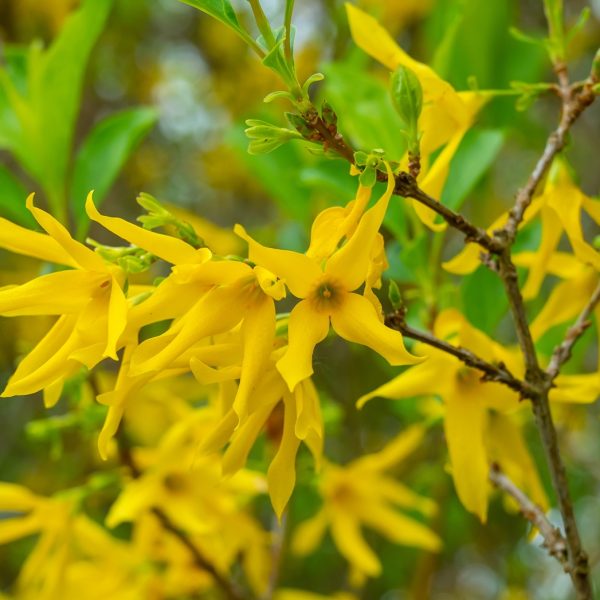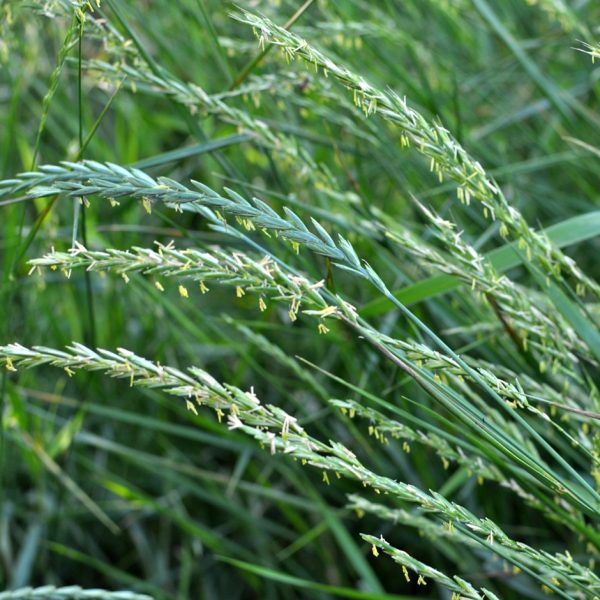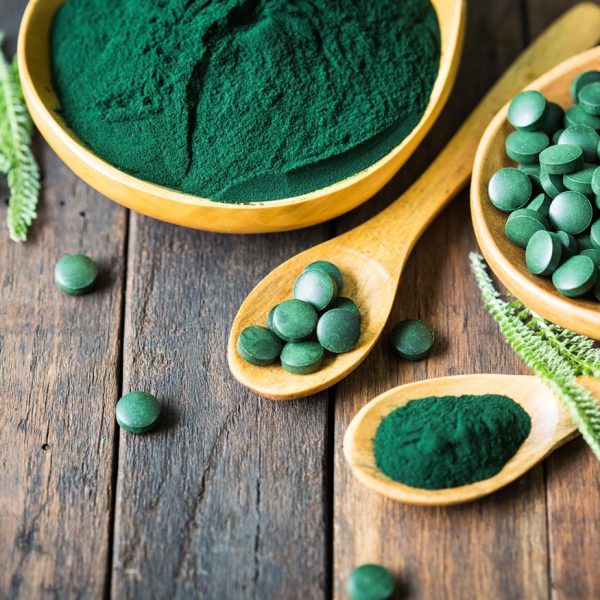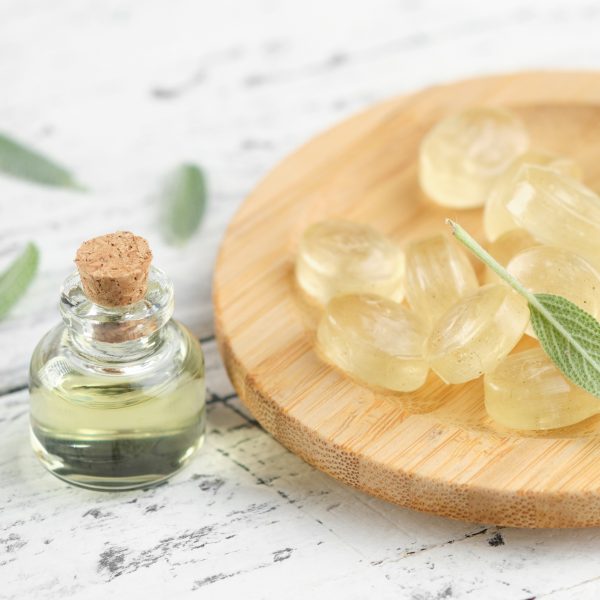October is the month to be foraging fungi. Mo Wilde shares with us the medicinal mushrooms found growing in the UK this time of year.

Just past the autumn equinox, we enter October when the fungi are at their zenith. We’ve been feasting on wild mushrooms like chanterelles and porcini for a while now but it’s with the onset of the colder weather and misty mornings, that the medicinal mushrooms are at their best. The main ones that I look out for are artist’s bracket, turkey tails, hen of the woods, birch polypore, chaga and cordyceps.
To be a mushroom is to have chitin and polysaccharides as the building bricks of your cell walls. It is these beta-glucans polysaccharides which help to modulate our immune system (1). All mushrooms contain these simple sugar chains, even the humble button mushroom, in the same way that all humans have bones that contain calcium. So, all edible mushrooms are good for you to a certain extent but some have superpowers. These are often the saprotrophs — hard, woody mushrooms that break down and recycle wood cellulose or, in the case of cordyceps, insect exoskeletons. These fungi are the highest in beta-glucans content (2).
Importantly, the mushrooms have to be dried, then broken down to as close to a powder as you can — or very thinly sliced — then boiled, in order to free the beta-glucans polysaccharides from the cell walls. Just swallowing the powder in a capsule won’t help unless it’s been extracted in hot water, then re-dried, beforehand.
Artist’s bracket (Ganoderma applanatum)

Artist’s bracket is closely related to reishi mushroom Ganoderma lucidum but far more abundant in Britain on a range of broadleaved trees. It is a tough grey-brown conk, often powdered with chocolate-brown spores, with a white pore surface that is incredibly sensitive to touch. If you want to use it as a canvas, make sure you prise it off a tree gently, without pressing your fingers onto the pore surface as it will record your fingerprints permanently in sepia. You can then use a sharpened twig to draw on it with incredible detail and even shading. Once the mushroom dries out this drawing will last for years.
In China, artist’s bracket is known as ‘classical lingzhi’, lingzhi being the name for reishi, a mushroom that’s been used medicinally for over 3,000 years. Recent scientific studies have found that G. applanatum is “a promising mushroom for antitumour and immunomodulating activity” (3) and contains meroterpenoids that “displays potent antifibrolytic activity”(4). I like to use it to keep my immune system in good shape in the winter. I also like to collect the spores as a nerve-calming sleep aid to add to an evening cup of hot chocolate. Harvest the smaller, firm fruiting bodies from a fallen or dying tree. Large conks are fairly immoveable. Some children near me broke one, around 40 cm wide, off a tree one Samhain. I counted the pore layers on it and it was probably around 50 years old.
Turkey tail (Trametes versicolor)

Turkey tail can fruit in huge numbers at once especially on recently felled beech or oak trunks. True to its name, it has bands of concentric grey or brown rings that are reminiscent of its farmyard namesake. In its brown form it can be mistaken for the hairy curtain crust fungus (Stereum hirsutum). The main differences are that turkey tails have a pure white pore layer and a smooth upper surface, whereas curtain crust has a yellow-cream pore layer and short ‘nasal’ hairs on the edge of its upper crust. Turkey tails are one of the most densely researched medicinal mushrooms for their support to the immune system and have been tested in large clinical trials as adjuncts in breast and other cancers (5–7). A drug called Krestin is its polysaccharide-Kureha (PSK), and polysaccharide peptide (PSP) is also used as a drug. I like to chew on the tails. It’s a little like a non-sticky, mushroom-flavoured chewing gum whose flavour intensifies the more you chew. Ultimately, they end up in my dehydrator to be boiled up later into an immune tonic – either in a tea, a stock or a soup.
Here is my recipe for a turkey tail decoction which you can follow for any of the species mentioned here. Remember that you can only liberate the immune supporting beta-glucans by boiling the mushroom in hot water.
Turkey tail decoction
Turkey tails contain an average of 50% beta-glucans (8). So, use 6 g of dried turkey tails. Ideally, I would powder them, as this exposes more of the mushroom to the water and you get the most out of them. But it will work regardless and the exact strength is not critical.
Divide this remaining liquid into three parts. These are your three doses for the day and each one should contain 1 g of beta-glucans, thereabouts.
- Put the turkey tails into a saucepan with six cups of water. Bring to the boil, then turn the heat down, cover the pan, and simmer gently for at least an hour. I use a slow cooker and leave them in for 24 hours, for a really deep decoction.
- Remove from the heat and leave it to infuse while it cools, then strain it off.
- You can then return the liquid to the pan and reheat it to evaporate off some of the water until you have around three cupfuls left.
Hen of the woods (Grifola frondosa)
Hen of the woods is known in Japan as maitake — the dancing butterflies mushroom. I wonder what it says about a culture that we see its overlapping grey-brown fronds as the feathers of a hen, nestling at the foot of an oak tree, while the Japanese see butterflies! Most of the medicinal maitake is from cultivated stock as it is fairly easy to grow on sawdust or woodchip, and research shows it is antidiabetic as well as antitumour (9,10). I have to admit that not much makes it into my medicine cabinet as it’s one of my favourite gourmet mushrooms for dinner.
Birch polypore (Piptoporus betulinus)
Birch polypore is specific to aging birch trees. It appears ascending the trunk like a series of pale-brown and white flying saucers. It is one of the oldest medicinal mushrooms used in Europe and dried pieces were found around the neck of Ötzi, also called the Iceman, is the natural mummy of a man who lived between 3350 and 3105 BC.
It’s anti-inflammatory with a folk medicine history in treating arthritis; anti-tumour used in Eastern Europe to treat cancers (specifically bowel cancers); is immunomodulating, antimicrobial, antiviral, and antiparasitic (11,12). Some archaeologists have attributed Ötzi’s possession of the birch polypore to its other use as a worming medicine, as he also had intestinal worms. However, if I was on the run from men with spears and arrows, I’d be favouring it for its traditional wound healing abilities on fresh, bleeding cuts.
Chaga (Inonotus obliquus)
The chaga conk is not a mushroom (i.e. a fruiting body) but the food storage organ of a fungus that only reproduces at the very end of its life cycle. It is very slow growing — taking at least 10 years to produce a harvest-sized lump — and there is not an inexhaustible supply, especially in Scotland. Unfortunately, due to the pressures from illegal harvesting, chaga is now fairly rare in Scotland (although not at risk globally), with denuded, and often damaged birch trees, while there is a huge amount of ‘Scottish chaga’ for sale in online marketplaces. Use it when you or your loved ones are really ill and, for general health, use fast growing species like birch polypore, aka ‘white chaga’, or turkey tails that reproduce annually. It is too precious for just coffee and cocktails.
Scarlet caterpillarclub (Cordyceps militaris)

Scarlet caterpillar club is often known just as cordyceps. Many people are surprised to find out that this famous medicinal mushroom grows in the UK. It can be hard to spot as its 3–4 cm tall clubs hardly poke above the moss. The last time I saw it was on the 25 October 2022. Its fiery orange heads appeared just hours after a beautiful baby, born with the same-coloured hair, following the new moon solar eclipse. Surely born under the dominion of the Sun! Cordyceps helps to revitalise energy and the oxygen-carrying capacity of the blood. In China it has been used for fatigue, male potency and athletic performance. You are unlikely to find enough to use it medicinally but it is a mushroom to watch out for and admire!
Among the mycorrhizal mushrooms at ground level there are still common edible mushrooms with medicinal properties. Bay bolete (Imleria badia), helpful for low spirits (13). Shappy inkcap (Coprinus comatus) to help control blood sugar levels (14). Many mushrooms, like the penny bun (Boletus edulis) are high in potassium and low in sodium — this helps control blood pressure (15,16). A lot also have anti-cancer properties (17,18), like Hedgehog fungus (Hydnum repandum), which has spines under its cap instead of gills or tubes. I wouldn’t suggest that anyone tried to treat cancer themselves. However, there are large scale studies that show eating three portions of mushrooms a week could reduce your risk of cancer by a third (19,20). So, enjoy foraging them before the deep winter and remember, never put anything in your mouth unless you are 100% sure you’ve identified it correctly!
References
- Akramienė D, Kondrotas A, Didžiapetrienė J, Kėvelaitis E. Effects of ß-glucans on the immune system. Medicina. 2007;43(8):597.
- Liu JJ, Hou YK, Wang X, Zhou XT, Yin JY, Nie SP. Recent advances in the biosynthesis of fungal glucan structural diversity. Carbohydr Polym. 2024:121782.
- Jeong YT, Yang BK, Jeong SC, Kim SM, Song CH. Ganoderma applanatum: a promising mushroom for antitumor and immunomodulating activity. Phytother Res. 2008;22(5):614-619.
- Luo Q, Di L, Dai WF, et al. Applanatumin A, a new dimeric meroterpenoid from Ganoderma applanatum that displays potent antifibrotic activity. Org Lett. 2015;17(5):1110-1113.
- Zhong L, Yan P, Lam WC, Yao L, Bian Z. Coriolus versicolor and Ganoderma lucidum related natural products as an adjunct therapy for cancers: A systematic review and meta-analysis of randomized controlled trials. Front Pharmacol. 2019;10:703.
- Eliza WL, Fai CK, Chung LP. Efficacy of Yun Zhi (Coriolus versicolor) on survival in cancer patients: systematic review and meta-analysis. Recent Pat Inflamm Allergy Drug Discov. 2012;6(1):78-87.
- Habtemariam S. Trametes versicolor (Synn. Coriolus versicolor) polysaccharides in cancer therapy: Targets and efficacy. Biomedicines. 2020;8(5):135.
- Kozarski M, Klaus A, Nikšić M, et al. Antioxidative activities and chemical characterization of polysaccharide extracts from the widely used mushrooms Ganoderma applanatum, Ganoderma lucidum, Lentinus edodes and Trametes versicolor. J Food Compos Anal. 2012;26(1-2):144-153.
- Hong L, Xun M, Wutong W. Anti‐diabetic effect of an α‐glucan from fruit body of maitake (Grifola frondosa) on KK‐Ay mice. J Pharm Pharmacol. 2007;59(4):575-582.
- Zhao F, Guo Z, Ma ZR, Ma LL, Zhao J. Antitumor activities of Grifola frondosa (Maitake) polysaccharide: A meta-analysis based on preclinical evidence and quality assessment. J Ethnopharmacol. 2021;280:114395.
- Grienke U, Zöll M, Peintner U, Rollinger JM. European medicinal polypores–A modern view on traditional uses. J Ethnopharmacol. 2014;154(3):564-583.
- Pleszczyńska M, Lemieszek MK, Siwulski M, Wiater A, Rzeski W, Szczodrak J. Fomitopsis betulina (formerly Piptoporus betulinus): the Iceman’s polypore fungus with modern biotechnological potential. World J Microbiol Biotechnol. 2017;33:1-12.
- Lazur J, Hnatyk K, Kała K, Sułkowska-Ziaja K, Muszyńska B. Discovering the potential mechanisms of medicinal mushrooms antidepressant activity: a review. Antioxidants. 2023;12(3):623.
- Liu Y, Zhao Y, Yang Y, et al. Structural characteristics and hypoglycemic activity of polysaccharides from Coprinus comatus. Bioact Carbohydr Diet Fibre. 2013;2(2):164-169.
- Midoh N, Miyazawa N, Eguchi F. Effects of a hot-water extract of porcini (Boletus aestivalis) mushrooms on the blood pressure and heart rate of spontaneously hypertensive rats. Biosci Biotechnol Biochem. 2013;77(8):1769-1772.
- Rauf A, Joshi PB, Ahmad Z, et al. Edible mushrooms as potential functional foods in amelioration of hypertension. Phytother Res. 2023;37(6):2644-2660.
- Dizeci N, Karaca B, Onar O, Cihan AC, Akata I, Yildirim O. The remarkable antibiofilm activity of the sweet tooth mushroom, Hydnum repandum (Agaricomycetes), displaying synergetic interactions with antibiotics. Int J Med Mushrooms. 2021;23(10).
- Şebin M, Yılmaz N, Aydın A. Some Wild Mushrooms with High Antioxidant Capacity Exhibit Potent Anticancer Activity on Cancer Cells using the Apoptotic and Antimigration Cell Death Mechanisms. Anticancer Agents Med Chem. 2023;23(13):1567-1576.
- Li J, Zou L, Chen W, et al. Dietary mushroom intake may reduce the risk of breast cancer: evidence from a meta-analysis of observational studies. PLoS One. 2014;9(4):e93437.
- Ba DM, Ssentongo P, Pelucchi C, et al. Mushroom consumption and risk of gastric cancer: a pooled analysis within the stomach cancer pooling project and a combined meta-analysis with other observational studies. Eur J Cancer Prev. 2023;32(3):222-228.
































